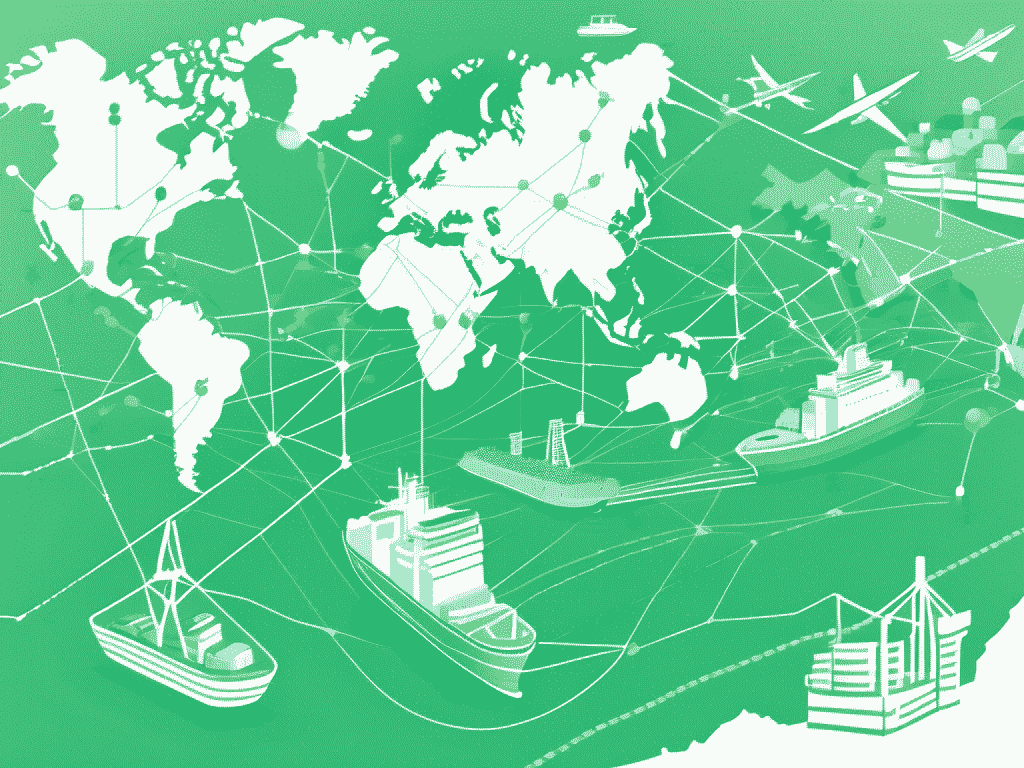Share this
Conquer Cross-Border Ecommerce By Planning for These Challenges
by Shipfusion Team on Feb. 19, 2025

Expanding into cross-border ecommerce presents a massive growth opportunity but also introduces complexities that can disrupt operations. From customs compliance to currency exchange, planning for these challenges ensures a seamless international selling experience.
Here’s what to consider when navigating cross-border ecommerce:
Customs and Duties
Every country has different customs regulations and import duties, which can impact pricing and delivery times.
Businesses must:
- Research country-specific regulations to avoid unexpected fees or shipment delays.
- Use a landed cost calculator to provide customers with total costs upfront, reducing abandoned carts.
- Partner with experienced logistics providers who manage international shipping compliance.
- Automate customs documentation through a fulfillment partner or ecommerce platform to prevent processing errors.
By proactively managing customs, businesses can streamline international order fulfillment and improve customer satisfaction.
International Shipping Complexities
Cross-border shipping is more complex than domestic delivery, requiring careful logistics planning.
Key considerations include:
- Carrier partnerships – Work with global carriers that offer competitive rates and reliable delivery times.
- Shipping zones – Understand how distance affects cost and transit time for different regions.
- Tracking transparency – Provide real-time tracking updates to maintain customer trust.
- Duty-paid options – Offer DDP (Delivered Duty Paid) shipping to prevent customers from facing unexpected import fees.
Optimizing international shipping ensures timely deliveries and a better customer experience.
Tax Compliance
Tax regulations vary across countries, and failing to comply can result in penalties.
To stay compliant:
- Understand VAT, GST, and sales tax requirements for each market.
- Register for tax obligations in regions where you exceed economic thresholds.
- Automate tax calculations through ecommerce platforms that integrate tax compliance tools.
- Monitor regulatory changes to avoid disruptions due to new tax laws.
Proper tax management prevents legal complications and enhances financial transparency.
Currency and Payment Processing
Consumers prefer to shop in their local currency and use familiar payment methods.
To accommodate international buyers:
- Enable multi-currency pricing to display prices in local currencies.
- Accept region-specific payment methods like Alipay, iDEAL, and Paytm.
- Implement fraud prevention tools to reduce chargebacks and protect customer transactions.
- Use a secure payment gateway that complies with global security standards (PCI DSS, 3D Secure).
Optimizing payment processing increases conversion rates and builds customer trust.
Localized Customer Experience
International customers expect a shopping experience tailored to their region.
To improve localization:
- Translate website content into multiple languages for better engagement.
- Offer region-specific promotions based on cultural events and local holidays.
- Provide local customer support through chat, email, or phone services.
- Ensure clear return policies to make international buyers feel confident in their purchase.
A well-localized ecommerce store strengthens brand loyalty and encourages repeat purchases.
Cross-Border Ecommerce Isn’t a Challenge for Shipfusion
Managing cross-border ecommerce logistics requires expertise, infrastructure, and the right technology. Shipfusion simplifies global fulfillment with a North American network of tech-driven warehouses, customs compliance support, and real-time inventory tracking.
Whether expanding into new markets or optimizing existing international operations, Shipfusion’s fulfillment solutions eliminate the guesswork. Contact us today to learn how Shipfusion can streamline your cross-border ecommerce strategy.
Share this
You May Also Like
These Related Articles

How to Sell Internationally on Amazon In 2025

What Does the Future of Cross-Border Shipping Hold?

Shipping and Fulfillment In Ecommerce, Decoupled
- March 2025 (23)
- February 2025 (26)
- January 2025 (37)
- December 2024 (16)
- November 2024 (23)
- October 2024 (22)
- September 2024 (27)
- August 2024 (9)
- July 2024 (8)
- June 2024 (5)
- May 2024 (8)
- April 2024 (8)
- March 2024 (6)
- February 2024 (6)
- January 2024 (5)
- December 2023 (3)
- November 2023 (3)
- October 2023 (5)
- September 2023 (4)
- August 2023 (2)
- July 2023 (1)
- June 2023 (4)
- March 2023 (2)
- October 2022 (1)
- September 2022 (5)
- August 2022 (4)
- July 2022 (7)
- June 2022 (4)
- May 2022 (4)
- April 2022 (6)
- March 2022 (2)
- February 2022 (1)
- January 2022 (3)
- December 2021 (2)
- November 2021 (4)
- October 2021 (2)
- September 2021 (5)
- August 2021 (4)
- July 2021 (5)
- June 2021 (3)
- May 2021 (2)
- April 2021 (3)
- March 2021 (3)
- February 2021 (3)
- January 2021 (2)
- December 2020 (4)
- November 2020 (2)
- October 2020 (4)
- September 2020 (2)
- July 2020 (5)
- June 2020 (4)
- May 2020 (2)
- April 2020 (2)
- March 2020 (4)
- February 2020 (1)
- December 2019 (1)
- May 2018 (1)
- March 2018 (2)
- February 2018 (3)
- January 2018 (3)
- November 2017 (3)
- July 2017 (4)
- March 2017 (3)
- February 2017 (5)
- January 2017 (3)
- December 2016 (4)
- November 2016 (6)
- October 2016 (6)
- October 2015 (1)
- September 2015 (1)
- June 2015 (3)
- May 2015 (3)
- August 2014 (1)
- July 2014 (1)
- March 2014 (1)
- February 2014 (1)